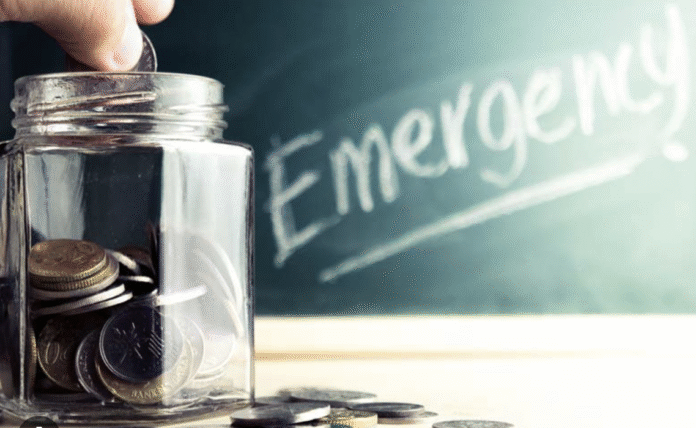Life is rarely predictable. Whether it’s a sudden job loss, a medical emergency, a major home repair, or even a global crisis like a pandemic, unexpected expenses are a universal reality. For people everywhere—from New York to Nairobi to New Delhi—financial uncertainty can threaten hard-earned peace of mind. That’s where an emergency fund becomes an essential safety net for you and your family, regardless of where you live.
What Is an Emergency Fund?
An emergency fund is a dedicated pool of money set aside exclusively to cover urgent, unexpected costs. It’s not used for planned expenses like vacations or shopping, and it shouldn’t be invested in risky assets. Instead, it serves as a financial buffer that allows you to handle life’s surprises without going into debt or derailing your financial goals.
Why Does an Emergency Fund Matter—Globally?
Reduces Stress: Knowing you have funds for emergencies provides comfort and stability, even when the world feels chaotic.
Prevents Debt Spirals: Without a cash cushion, people often rely on credit cards or loans during crises, leading to expensive interest payments and long-term debt.
Protects Investments: With an emergency fund, you’re less likely to liquidate investments at the wrong time (during a downturn) just to cover immediate needs.
Increases Freedom: Financial flexibility means you can handle challenges—from layoffs to medical bills—without making hasty decisions or sacrifices.
No matter if you earn in dollars, euros, rupees, or yen, an emergency fund is a fundamental pillar of financial resilience.
How Much Should You Save?
While expert recommendations vary, many agree your emergency fund should ideally cover three to six months’ worth of living expenses. If your income is unstable, consider increasing this buffer to nine months or more.
Ask yourself:
What are my core monthly expenses? (Think: rent/mortgage, food, utilities, transportation, medical expenses, childcare, insurance, minimum debt payments.)
Do I have dependents or live in a country with high health or economic risk?
How stable is my job or source of income?
Use these answers to tailor your target fund. For example, a single young professional in a stable government job may aim for three months’ expenses, while a self-employed parent might target a larger cushion.
Step-by-Step: Building Your Emergency Fund
1. Set a Realistic Goal
Start by calculating the amount you want to save. Multiply your essential monthly expenses by your chosen safety margin (3, 6, or 9 months). This is your target.
Don’t be intimidated by a large number—breaking it down into small, manageable steps is key.
2. Create a Separate, Accessible Account
Resist the temptation to mix your emergency fund with everyday spending. Instead, open a dedicated savings account or money market fund with instant access and, ideally, some interest.
Pro tip: Consider accounts that aren’t linked to your debit card, so you’re less likely to dip in for non-emergencies.
3. Automate Your Savings
Treat your emergency fund like a recurring bill—set up automatic monthly transfers from your checking to your dedicated savings account. Even modest amounts (say, $25 or ₹2,000 a month) add up fast.
4. Cut Unnecessary Expenses
Revisit your budget and see what you can temporarily trim: unused subscriptions, frequent takeout, streaming services. Every little saving nudges you closer to your goal.
5. Allocate Windfalls and Bonuses
Got a tax refund, birthday gift, or annual bonus? Funnel a portion (or all) into your emergency fund. Unexpected money is perfect for meeting unexpected needs in the future.
6. Track Progress and Celebrate Milestones
Breaking your goal into mini-milestones (one month’s expenses, then two, and so on) keeps you motivated. Celebrate each milestone (responsibly) as you reach it!
7. Replenish If Used
If you do need to dip into your fund for a true emergency, prioritize refilling it as soon as your finances allow.
Global Tips: Tailoring Your Fund to Local Needs
Consider Currency Fluctuations: If you work or live in a country with volatile currency, consider holding part of your emergency fund in a stable international currency or inflation-linked asset.
Banking Reliability: In regions where banking networks are less stable, diversify how you hold your fund: a mix of bank accounts, mobile money, or even cash for very short-term emergencies (while still prioritizing safety).
Health and Social Security: If you live in a country with little to no state healthcare or unemployment safety net, aim for a larger emergency fund.
Immigrants and Expats: If you’re away from home, factor in higher emergency costs (like sudden travel) and possibly keeping some funds accessible internationally.
What Qualifies as a True Emergency?
Loss of job or major reduction in income
Urgent medical expenses not covered by insurance
Essential home or car repairs
Unexpected travel for family emergencies
Natural disasters or significant local crises
Avoid using your emergency fund for predictable or “nice-to-have” expenses such as vacations, routine home upgrades, or investment opportunities.
Frequently Asked Questions
Q: Should I pay down debt or build my emergency fund first?
A: Try to do both, but prioritize building a basic emergency fund (one month’s expenses) so you don’t fall further into debt if something goes wrong. Then, gradually accelerate debt payments as your fund grows.
Q: Where should I keep my emergency fund?
A: In an account that’s safe, liquid, and not subject to market volatility. Avoid locking funds away in long-term investments.
Q: What if saving isn’t possible right now?
A: Start with whatever you can—saving even a small amount ($5, 500 yen, or ₹100) is better than nothing. Increase savings when your circumstances improve.
Conclusion
Building a solid emergency fund is one of the most empowering financial steps you can take—no matter where you live or how much you earn. It isn’t about fearing the worst, but about being ready, resilient, and in control. Start today, even if with a small step. Your future self will thank you when life’s next surprise arrives.


